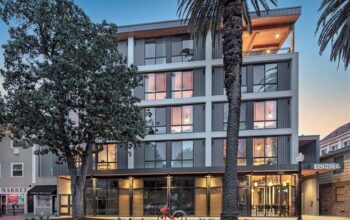The State of California is forcing Riverside County to allow the building of over 40,000 homes. Sacramento wants this county—and your—to become a gigantic slum so far the governments inside of Riverside have refused to kill off their county—and Sacramento Democrats are getting mad.
“Riverside County issued 1,138 building permits for new homes in its unincorporated areas last year — less than 3% of what it needs to meet a state-mandated goal for new housing.
By 2030, the county should have planned for 40,647 new homes in communities such as Winchester and the Temescal Valley that aren’t part of any city.
A county spokesperson blamed the lack of progress on market conditions and a lack of basic infrastructure in unincorporated areas, which tend to be more rural and less populated than cities. If Riverside County doesn’t catch up, it could be forced to provide streamlined approval to some residential projects that include affordable housing.”
Who needs infrastructure or a need for the housing—go broke, create slums, get more crime—build so the illegal aliens have a place to live. California, as a whole, like San Fran is collapsing and this State policy is a large part of the reason.
Riverside County must plan for 40,647 new homes, but only issued permits for 3% of that

By JEFF HORSEMAN and JEFF COLLINS, The Press-Enterprise, 5/8/23 https://www.pressenterprise.com/2023/05/07/riverside-county-must-plan-for-40647-new-homes-by-2030-its-only-issued-permits-for-1138/
Riverside County issued 1,138 building permits for new homes in its unincorporated areas last year — less than 3% of what it needs to meet a state-mandated goal for new housing.
By 2030, the county should have planned for 40,647 new homes in communities such as Winchester and the Temescal Valley that aren’t part of any city.
A county spokesperson blamed the lack of progress on market conditions and a lack of basic infrastructure in unincorporated areas, which tend to be more rural and less populated than cities. If Riverside County doesn’t catch up, it could be forced to provide streamlined approval to some residential projects that include affordable housing.
San Bernardino County is doing better in meeting its housing goals. Of the 8,832 new homes the county is supposed to plan for by 2030, it’s issued permits for 1,185, or roughly 13%, according to information provided by county spokesperson David Wert.
Since 2021, Los Angeles County has issued building permits for 2,113 new homes — 2.4% of its goal of 87,119 by 2030, according to a March update from LA County staff.
The number of affordable homes Riverside County must build in unincorporated areas “feels arbitrary” and appears to conflict with California’s environmental goals and rules, Board of Supervisors Chairman Kevin Jeffries said via email.
“Many of our unincorporated communities are still rural and lack municipal water and sewer that would be required to support new housing,” he said, adding that the state refuses to expand freeway capacity though residents of new homes would use those roads.
With septic systems for new homes “nearly outlawed … the cost to build new municipal sewer … systems (to accommodate new housing) is extremely high, assuming such proposals can even get through the environmental review process and mitigation,” Jeffries said.
“I’ve spoken with affordable home builders and they have shared that when they factor in all the legal, regulatory, labor and material costs to build apartments, they are approaching $500,000 per apartment.”
Government can only approve what homebuilders want to build, Jeffries said, adding that if it’s too expensive and “a regulatory nightmare,” builders will go to other states.
In an annual progress report to the state last month, Riverside County’s planning staff wrote that in 2022, the county issued 791 permits for homes in the “above moderate” category, intended for families of four with yearly incomes of more than $90,351.
Forty-eight permits were issued for “moderate” homes priced for families making $60,251 to $90,350 a year. Homes in the “low” category — $36,651 to $60,250 a year — received 299 permits, while no permits were issued in the “very low” or “extremely low” categories for families making less than $37,650 annually.
Riverside County’s median household income was $79,024 in the 2020 Census.
Of the 40,647 new homes Riverside County must plan for by 2030, 10,371 are in the very low income category and 6,627 are in the low income category. Another 7,347 are in the moderate income category while 16,302 are in the above moderate income category.
Riverside County – and the vast majority of California’s cities and counties — – fell way behind in meeting much lower housing goals during the last eight-year planning period.
The county issued permits for just 10,766 units out of a state-mandated housing goal of 30,303. Statewide, just 29 out of 538 California cities and counties were fully on track in meeting their housing goals by the end of 2021, state figures show.
In addition, Riverside County’s new housing goal is one-third higher during the current planning period, which runs through October 2029.
Accommodating more than 40,000 new homes in unincorporated Riverside County in fewer than seven years “will certainly be challenging,” Felisa Cardona, spokesperson for the county’s Transportation and Land Management Agency, said via email.
Land costs, interest rates, the availability of construction workers and “the general economic makeup of the region” heavily influence the number of homes built, Cardona said.
Lack of water, sewer, storm drains and other infrastructure can “significantly impact where new housing can be built and the pace at which it can be built,” she added.
The county works with nonprofit organizations, developers and other groups to provide more low-income housing, Cardona said.
Infrastructure improvements funded by the county’s Unincorporated Communities Initiative also can spur new housing, she said. And the county spent more than $60 million in federal coronavirus relief aid on affordable housing, Cardona said.
Also, the county waives development impact fees and fast-tracks permits for all affordable housing, Cardona said.
COVID-19 lockdowns hampered cities and counties throughout Southern California in preparing their housing plans, local officials said. In addition, officials complained that larger homebuilding goals and new state requirements made preparing housing plans more challenging and technical in the current planning cycle.
Last year, 778 affordable housing units opened with the county’s financial assistance, she added. In cities and unincorporated areas, more than 1,000 affordable units are under construction, 630 are set to break ground in the next six months and 6,000 units are in the pipeline, Cardona said.
Riverside County is one of more than 100 jurisdictions in Southern California that failed to adopt a state-certified homebuilding plan, called a housing element, more than 18 months after they were due.
A 53-year-old state law requires California cities and counties to revise their housing plans every five or eight years and zone enough land to meet future housing needs at all income levels.
These plans typically run into the hundreds of pages, laying out a community’s housing goals and how it plans to meet them. They include an inventory of sites where new housing can be built. Local governments also must rezone land as needed to accommodate the additional housing.
Under new California laws, local governments also are required to eliminate obstacles to housing development and to adopt fair housing plans to eliminate segregation.
Cities and counties that fail to adopt a plan by their due date are open to a wide range of consequences, including the loss of state grants, lawsuits and fines as high as $600,000 a month.
Developers can also pursue a “builder’s remedy” to build almost any type of housing anywhere in a community without an approved housing element, regardless of zoning.



